How to Tell if Something Is Microwave Safe – 10 Main Ways
-

- Last updated:
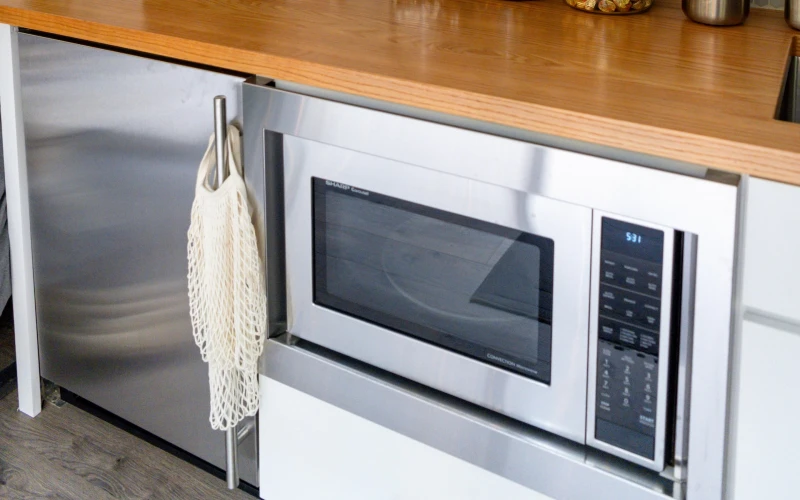
When we don’t have the time to use the stove or oven, we can always rely on the microwave. It’s the perfect device for defrosting, cooking, and reheating leftovers to get us fed before leaving the house. But sadly, not all containers are microwave-safe. If you use the wrong dish, you’ll end up ruining the meal, damaging the appliance, and even letting hazardous chemicals leach into the food.
So, how do you avoid that? We’ve got you covered! Keep reading to learn how to differentiate between microwave-friendly and unsafe materials!

The 10 Methods to Tell if Something Is Microwave Safe
1. Look for Microwave-Friendly Labels
If you’re not sure whether a cup, mug or plate can go into the microwave or not, look for a tag that says so. The food industry in the US is regulated by the FDA, and it requires local manufacturers to add labels to their dishes and containers. This system allows the customers to quickly compare different products and pick the ones that suit them best.
These tags are self-explanatory and easy to find. The list includes “food-safe”, “dishwasher-safe”, “freezer-safe”, and “microwave-safe”. So, if your favorite food container, bowl, or tumbler has a “microwave-friendly” label, that means you can use it. Sometimes, it can be a symbol (like three horizontal wavy lines).
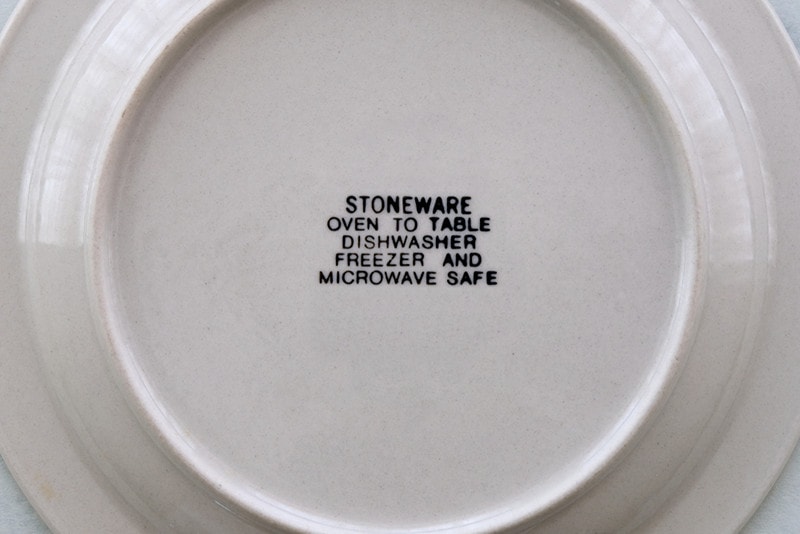
2. Only Use Ceramic and Glass Dishes
Ceramic dinnerware has one big advantage: it easily handles extreme heat. You can leave it in the oven for a very long time and never worry about it deforming, melting, or causing damage to the microwave. We’re talking about stoneware, porcelain, and China. The same goes for dishes made of glass. These materials are quite durable, too, and can last for ages.
Do keep in mind that tableware crafted from clay is weak against thermal shock. This won’t be an issue in the cooking cavity, but if you cook something on a stove, fire pit, or fireplace, the bowl/mug will crack or break. That’s because, by nature, pottery pieces are brittle, despite their durability and longevity.
3. Avoid Glazed Dinnerware
The ceramic glaze has been used in pottery for centuries for aesthetic and practical reasons. When applied, the glassy coating blocks the pores, making the dish waterproof. As a bonus, the exterior becomes tougher and more durable. On the downside, lead-glazed earthenware is a potential health hazard. If the glaze wasn’t applied properly, the lead may leach into your wood even when not heated.
The side effects can be quite severe, especially for children. The good news is—you can always test the ceramics to know for sure. The FDA recommends using lead-testing kits. All you have to do is rub the swab against the dish. If it changes color, stop using that dinnerware for cooking, reheating, or eating food. Here are the most dangerous ceramic types that you should avoid:
- Antique/heirloom types of ceramic ware
- Hand-crafted stoneware that’s rough on the edges
- Old, damaged ceramics with cracks and chips
- Dinnerware bought from street vendors/flea markets
- Bright dishes (lead is used to make red/orange/yellow brighter)
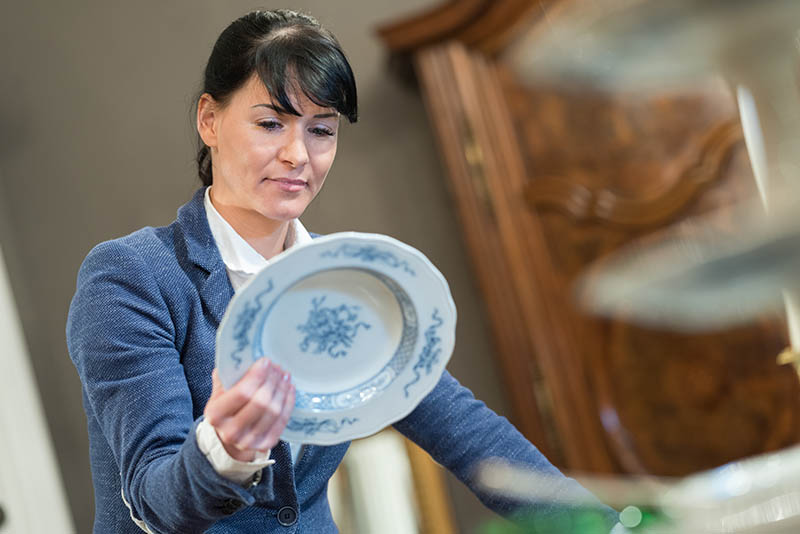
4. Learn About Different Plastic Types
In contrast to popular belief, not all plastics are dangerous. Some plastic products are specifically designed to be microwave-friendly. As always, before you pay for a container, check the bottom. If it has a microwave symbol that says it’s safe to use, go for it. Overall, there are seven types of plastic, and they all have unique properties and uses:
- Polyethylene terephthalate is a go-to plastic for water, soda, and cleaning formulas. PET is highly valued for its ability to “shield” food products from oxygen, making them last longer. PET is highly recyclable and easy to manufacture. But it’s not microwave-friendly.
- High-density polystyrene is stronger than PET. That’s why most milk jugs and motor oil containers are crafted from this plastic. Intended for one-time use, it’s recycled on a much larger scale. Some HDPE containers are allowed in the microwave.
- Polyvinyl chlorine is a sturdy plastic. Pipes, toys, and repellant products—that’s where PVC is used. This plastic is toxic, though, and will leach dangerous chemicals when exposed to heat. PVC is rarely recycled and should NEVER be put in a microwave oven.
- Cling wraps for storing food and grocery store bags are made of low-density polyethylene. Sadly, this plastic is incredibly hard to recycle. More importantly, while it won’t contaminate the food when you put it in a fridge, LDPE shouldn’t be used in the microwave.
- Thanks to its high resistance to heat, polypropylene is safe to use for reheating, defrosting, and cooking food. Recycling PP won’t be easy, but that’s a minor con.
- Polystyrene is largely used to manufacture food containers/packages. That means it’s safe to use around food. But you can’t put it in a microwave. When heated, PS releases styrene, a dangerous chemical that might leak into the food and contaminate it.
- Polycarbonate is used to craft medical containers and baby bottles. It contains a high level of BPA and that means microwaving baby formula in a PC bottle is a bad idea.
5. Check the Company/Brand
Not ready to memorize all the different plastic types? That’s okay! You can pick your dinnerware from a trusted brand. For example, plastic Tervis tumblers are mostly microwave-safe. You can heat your favorite drinks in these insulated cups/mugs and never worry about melting or contamination. Pyrex and Duralex are known for their microwave-friendly cookware lineups.
These products are equally resistant to heat and cold. Plus, you can put them in the dishwasher. Visions is another brand that easily withstands the heat generated by an oven or a stove. Premium-quality containers do cost a bit extra, but they compensate for that with a flexible design and extended lifespan.

6. Ask the Manufacturer Directly
If you’re shopping online and come across a container that you like, don’t hesitate to ask about it in the comments. An official representative will hit you back shortly. They’ll answer your question even if you do this on a third-party retailer’s website (but it might take more time). The FDA is very strict about labels and symbols. So, if someone from the company claims their dishware/container is microwave-safe, you can trust them.
7. If It’s Paper, Go With Wax or Parchment
What’s the first thought that pops into your head when asked about paper? Flammable! This is true for most paper products, but white, parchment, paperboard, and wax paper are actually microwave-safe. As long as there are no logos/writings on the container or package, you can use it to heat some food. Don’t keep the paper in there for too long, though. Now, what you should avoid is brown paper.
It’s one of the least heat-resistant materials. When left in the cavity for a long time, it might put the appliance on fire. And the fact that these bags are often coated in aluminum makes them an even worse pick. Furthermore, brown paper is known to leach chemicals into food or drinks when exposed to heat. Don’t risk it!

8. Don’t Microwave Anything Metallic
Stainless steel and aluminum are practically immune to rust or corrosion, easily withstand temperature extremes, and last forever. You can use metal dishes to eat food but not heat/reheat it. Unlike plastic, paper, ceramics, or glass, metal doesn’t absorb radiation. Instead, it reflects it. This means two things. First, the food won’t be cooked properly.
Secondly, all those bouncing microwaves create chaos in the cooking cavity, damaging the kitchen appliance beyond repairs. In the worst-case scenario, it will go up in flames! To avoid that, never use any old-school, metallic dishes, aluminum foil, or any containers/dishes that have metallic parts. This includes cups with metal handles, decorative trims, and ceramics with glaze.
9. Cold-Food Containers Are NOT Safe
To avoid trouble, make a rule of never using containers intended for cold storage use. Yes, it would’ve been great if you could just grab these containers from the fridge and throw them directly into the microwave. However, that will only make them deform and melt, ruining the meal and (potentially) damaging the microwave. We’re talking about the margarine, yogurt, and cottage cheese containers.
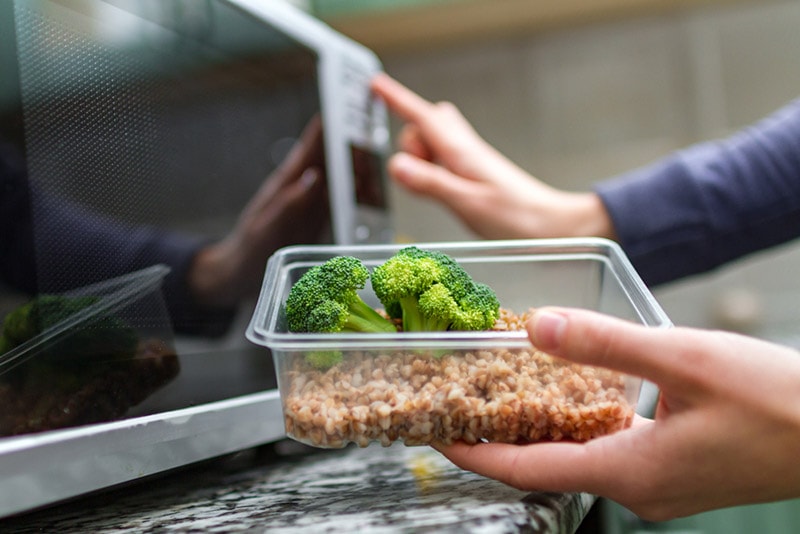
10. Do a Quick Water Test
If you don’t want to navigate through different sorts of plastic, ceramics, or paper, there’s a tried-and-true test that you can use. It’s always better to know in advance which plates and mugs in your kitchen are safe to use in a microwave and which aren’t instead of having to learn that the hard way. Here’s how you do it:
- For this to work, you’ll need a container (ideally, a cup) with a microwave-safe label
- Fill it with water: keep pouring until 75% of the vessel is full
- Now grab the dish that you want to test and put it in the cooking cavity along with the water-filled cup
- Turn the device on, set it to “High”, and run it for 40–60 seconds
- Remove the dish and gently put your hand on it
- If it’s cool to the touch while the water in the cup is warm, that means the dish is safe to use
- But if the water is cool, yet the dish is warm, you shouldn’t ever put it in the oven
- If you’re out of space, you can put the cup on top of the dish
- It will warm up the top of the dish, though—keep that in mind
 FAQ’s About How to Tell if Something Is Microwave Safe
FAQ’s About How to Tell if Something Is Microwave Safe
How Does the FDA Evaluate Products?
The Food & Drug Administration is a United States government agency. Its main job is to evaluate drugs, cosmetics products, and, of course, food before it ever makes it into the market. The FDA has an entire division with toxicologists, chemists, and other highly qualified specialists working 24/7 to make our lives safer.
One of the main focuses of the FDA is the chemical elements used in everyday packaging products, containers, and bags. First, they test their impact on animals and only then move to “human trials”. This organization has the authority to ban any product with even the slightest chance of being a health hazard to American consumers.
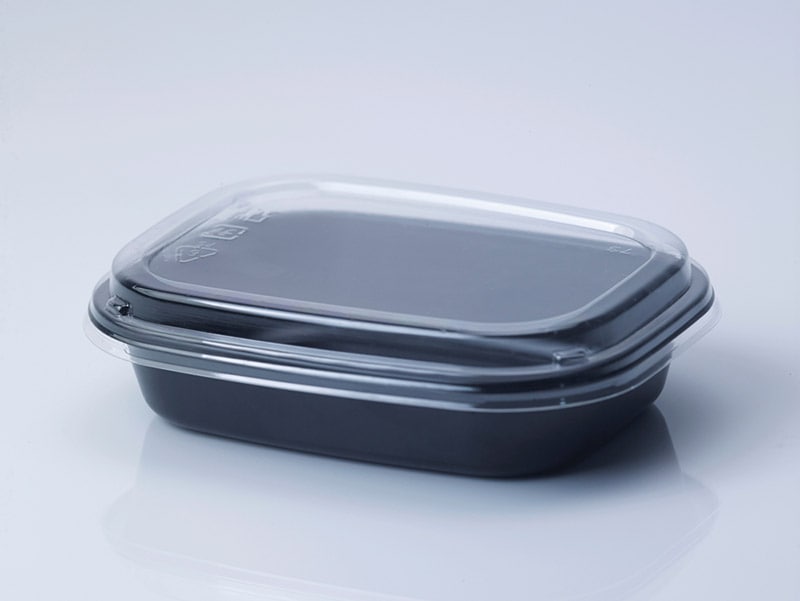
Does the FDA Categorize BPA and Phthalates As Dangerous?
Bisphenol A, commonly known as BPA, is a chemical compound found in polycarbonate plastic containers. And according to the FDA, BPA can leach into our food. However, since we’re exposed to small amounts of this hazardous chemical, plates, bowls, mugs, and cups crafted from PC plastic are safe to use. That still doesn’t mean you can put them into a microwave, though.
And what about phthalates—do they pose a health risk? The term “phthalates” describes a group of chemicals used in the production of various plastic products. Exposure to high levels can, indeed, be dangerous. However, the FDA claims that if you only use these plastics to store and eat food, you won’t be poisoned. Just like with BPA, as long as you don’t heat the containers, you’re good!
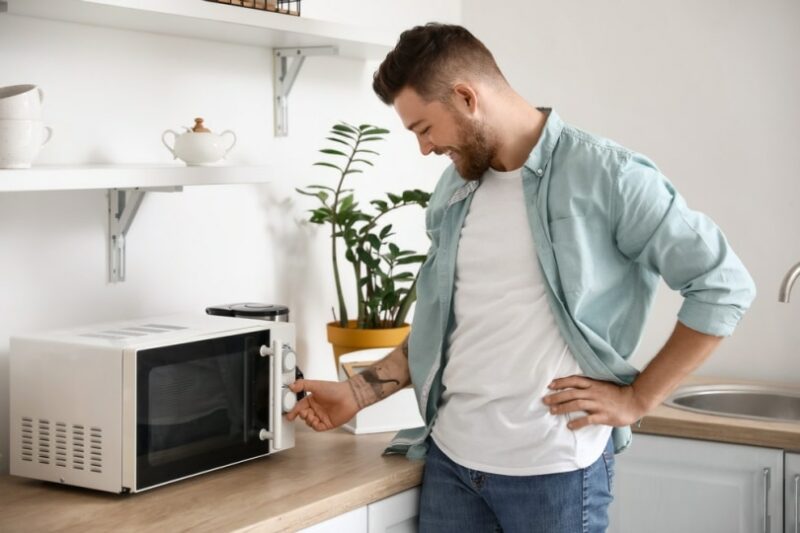
What About Styrene: Is It a Health Hazard?
Styrene is a colorless liquid that is often used in the manufacturing of rubber and plastic products. Polystyrene, Styrofoam, and other plastics contain high levels of styrene. But, after putting it through countless tests, the FDA has decided not to ban styrene. Thus, any container or package that’s rich in this chemical is officially safe to use for storing food.
The reason: evaluations have proven that when using so-called “food contact products” made of PS plastic, we’re exposed to extremely low levels of styrene. We’re talking about 10K times less styrene consumed compared to FDA’s daily limit. So, as you’ve probably already guessed, while ovens, stoves, and microwaves are not recommended, PS containers are perfectly safe for storage.
Conclusion
In the States, over 90% of households have a microwave. They’re cheap and very easy to use. All you need to do is put some vegetables, noodles, or meat into the cooking cavity, set the timer/temperature, and the device will do the rest. However, before you do any cooking or reheating, you need to make sure you’re using the right container.
Strangely enough, a huge number of plates, bowls, and food containers that we frequently put in the microwave are NOT safe to use. On the bright side, there are lots of materials on the market that are 100% microwave-friendly. As long as you know how to find the right containers, you’ll be able to enjoy your food and stay healthy!
Featured Image Credit: Andrea Davis, Unsplash
Contents
 FAQ’s About How to Tell if Something Is Microwave Safe
FAQ’s About How to Tell if Something Is Microwave Safe